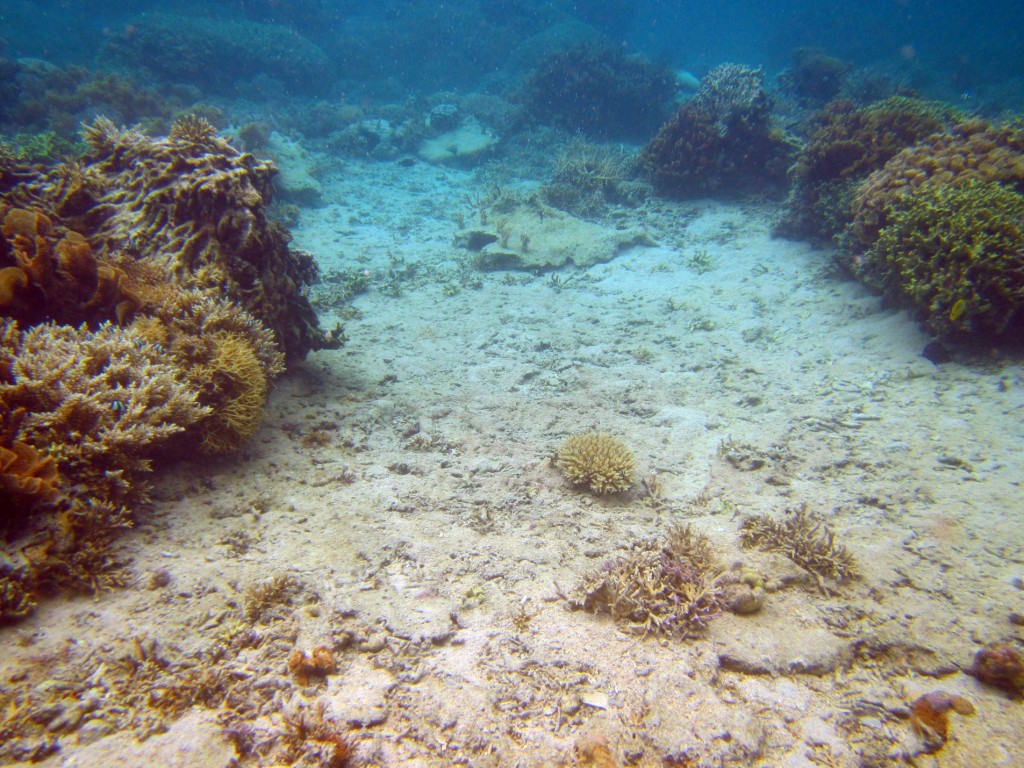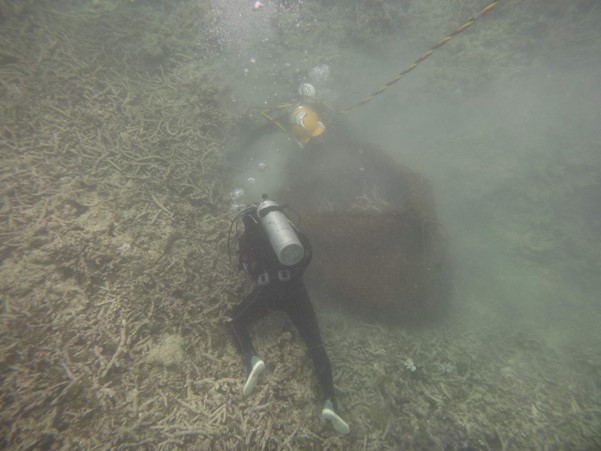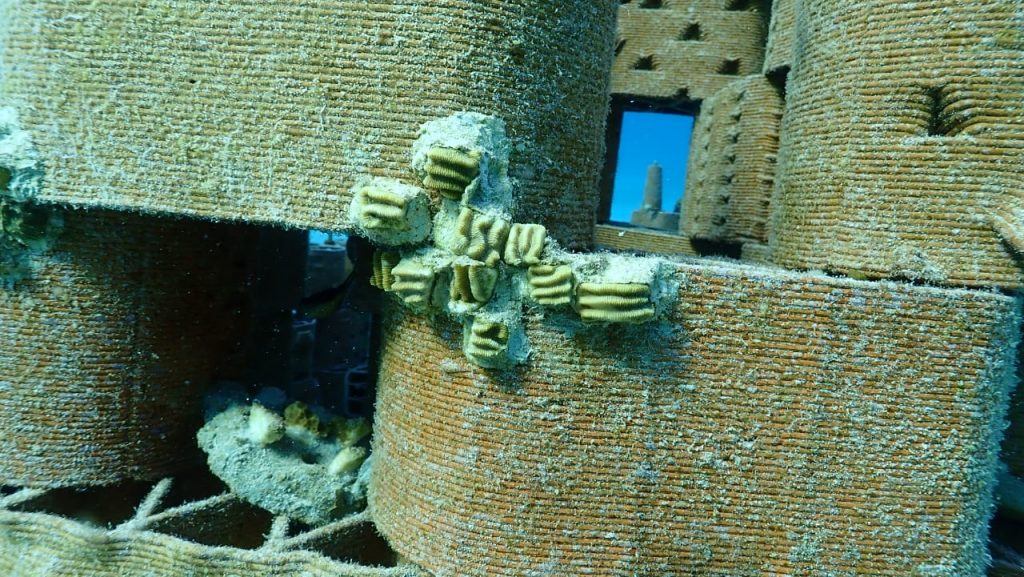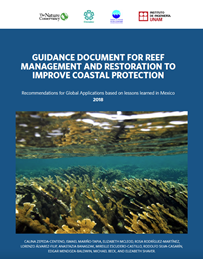Reef Substrate
In addition to healthy coral populations and cover on reefs, restoring the reef substrate may also be an important intervention when the natural reef structures become damaged, degraded, or unsuitable for coral larval settlement. For example, substrate addition interventions may be needed in areas where dynamite fishing has destroyed the reef structure before coral population restoration techniques like coral gardening and outplanting can be successful. Coral reefs where macroalgae has come to dominate the reef substrate may also need substrate enhancement interventions to make the substrate suitable for coral outplanting and natural recruitment processes.

A reef area that is suitable for coral restoration activities. Photo © Reef Explorer (Fiji) Ltd.
Rubble Stabilization
Human and climate-driven threats (e.g., dynamite fishing, trampling, tropical storms) is leading to the conversion of living coral reefs to large rubble fields at a rate exceeding the natural capacity for coral reef ecosystems to recover naturally. Stabilizing rubble may be beneficial on a small scale at high-value sites or following ship groundings that generate expansive areas of unconsolidated rubble on a previously well-consolidated reef framework.
Many interventions to fix unconsolidated or unstable reef rubble are still in the research and development phase, and there is little documentation of success or failure of current practices so far. However, some current rubble stabilization techniques include:
- Rubble removal
- Mesh netting to stabilize rubble
- Rock piles to stabilize rubble
- Small artificial structures (e.g., MARSS reef stars, reef balls)

Reef bags are used to collect rubble on a degraded reef in Australia. Photo © Tom Baldock.
Substrate Addition
Coral restoration historically used engineered structures to rebuild or stabilize coral reef framework after major damage caused by ship groundings, mining, or blast fishing. These projects often utilized manmade materials (e.g., limestone blocks, rock piles, molded cement, steel, wood, and tires) that failed to recruit reef-building corals onto structures. Modern reef substrate addition projects today use more natural materials and seek to enhance both ecological health and ecosystem services to people, like coastal protection. In some areas, restoration of the physical environment may be required before biological restoration of the coral and fish communities can occur.
The Guidance Document for Reef Management and Restoration to Improve Coastal Protection: Recommendations for Global Applications Based on Lessons Learned in Mexico by Zepeda et al. 2018 is a key resource providing a review of the role coral reefs play for coastal protection and provides a series of recommendations for assessing when, where, and how to apply artificial reef restoration for risk reduction, including different types of structures and ways to monitor for natural and artificial reefs for wave attenuation services.
Three key design elements need to be considered for substrate addition projects:
Natural materials are increasingly considered as they can allow for and accelerate natural colonization of reef organisms onto artificial structures. Natural chemical cues help signal colonization on a particular surface while synthetic or toxic chemicals can inhibit colonization. Other important factors for colonization include surface roughness and the stability of structure.
Natural reefs have a variety of formations and morphologies that create complex shapes and spaces. These morphologies both increase reef rugosity, increasing a structure’s ability to baffle wave energy, and attract reef organisms to settle and use structures as habitat. Structures should be designed with hollow areas, cavities, or other complex formations included.
Proper placement of structures on the seabed is critical to influencing wave and current patterns that could affect shorelines. Placement of structures should also cause as little damage to the natural environment as possible, avoiding areas with seagrass, coral patches and gorgonians. Similarly, they should not be placed in areas where they would pose a navigational hazard to boats and vessels.

Artificial structure made by the organization 'rrreefs' to enhance natural coral recruitment, Colombia. Photo © Phanor Montoya-Maya/Corales de Paz
Projects involving hard structures can be risky because poorly designed structures can become dislodged or break apart. Substrate addition projects should seek to work closely with local governmental agencies to obtain permits and environmental impact assessments and professionals such as coastal engineers to help in the modelling, design, and planning process prior to installing artificial structures. ref

